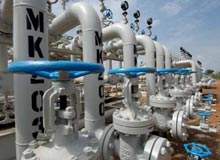
In June 2000, the US Export-Import Bank gave preliminary approval to a $300m loan guarantee for a project to develop crude oil in Chad and export it through a pipeline to Cameroon’s Atlantic coast. Consultation for the project began in 1993 and construction began in 2000.
The project included the development of the Doba oil fields in Chad and the construction of a 30in-wide buried pipeline from the oil fields in Chad, 1,070km to Cameroon’s Atlantic Coast pumping stations, ancillary facilities and infrastructure.
An offshore marine export terminal facility (a moored floating storage and offloading vessel) and associated marine pipelines and related facilities were also be constructed in Kribi, on the coast of Cameroon.
The project also involves the implementation of environmental management plans in Chad and Cameroon, a resettlement plan in Chad and a compensation plan in Cameroon. In addition, Chad has developed a revenue management programme designed to target petroleum revenues to the health, education, rural development and infrastructure sectors in a transparent manner.
Inhabitants of the oil-producing region around Doba and Bébédja are beginning to see the results of a policy that requires 5% of oil revenues to be invested in the region.
The region is now seeing school buildings and equipment, water towers, modern markets, and more are being built and refurbished with oil earnings. As of the end of 2006 some $30m was transferred to support citizens living near the production area.
PIPELINE SPONSORSHIP
Getting backing for the project has been complex. The project’s lead sponsor, Exxon Mobil, has reiterated its support as has the World Bank. In November 2000, Royal Dutch / Shell and Elf Aquitaine withdrew from the consortium only to rejoin in February 2001 after discussions with Exxon Mobil.
Oil projects have suffered from some delays due to a disagreement between the World Bank and Chad in 2005 over the terms of their loan for the pipeline. Chad had to promise to put more of the oil revenue back into solving the country’s poverty problems.
DEVELOPMENT OF THE DOBA OIL FIELDS
Three oil fields in the Doba basin started to be developed from 2001 onwards: Bolobo, Kome and Miandoun. This included the drilling of approximately 300 wells. Production will be up to one billion barrels of low sulphur oil over a period of 25 to 30 years at a rate of 250,000bpd.
A local facility has been developed at Kome to gather, treat and blend the crude oil produced. Very little natural gas has been produced.
A 120MW electric power generation plant has been constructed to supply power, which is fuelled by gas, crude oil or a combination of both.
ENVIRONMENTAL OPPOSITION
The initial environmental studies made by the consortium were considered inadequate after independent evaluations carried out by the Dutch and German governments. New studies were brought out and certain changes made to the project as a result, for example, re-routing the pipeline away from certain sensitive forest areas and zones inhabited by native peoples.
Nevertheless, the project has caused an outcry from environmental groups, who have argued that Cameroon’s Atlantic littoral forests, through which the pipeline passes, will be severely damaged by logging and the future of many thousands of the indigenous Bakola people is threatened.
It has been said that the project has little chance of delivering the claimed benefits to sustainable development while carrying major risks of irreparable environmental and social disruption. It has also been claimed that several World Bank and US policies have not been complied with, such as the lack of an oil spills response plan.
JOINT VENTURES
The Consortium developing the project was comprised of subsidiaries of ExxonMobil (operator, 40% interest), Petronas (35%) and ChevronTexaco (25%) along with the Chadian and Cameroonian Governments (3%).
The construction of the pipeline was carried out as a joint venture between France’s Spie-Capag group, Fluor and Willbros of the USA. Esso Chad was the project and production manager. The project has cost around $3.7bn and was completed in mid-2003.
COMPLETION
In July 2003 Exxon Mobil Corporation, along with its subsidiary Esso Exploration and Production Chad Inc, began pipeline fill operations on the Chad-Cameroon Oil Development and Pipeline Project. The pipeline had been completed one year ahead of the original schedule, along with facilities for one of the three oil fields under development.
The pipeline extends 660 miles from the oilfields in southern Chad to a Floating, Storage and Offloading (FSO) vessel located seven miles offshore Kribi, Cameroon, in the Gulf of Guinea. Construction on the central treating facilities in Chad was completed by the start of 2004.
The remaining two fields (Kome) were brought into production in April 2004 giving a total of 250,000bpd. The pipeline was inaugurated in October 2003 in a ceremony held at the Operations Center located at Kome in southern Chad.
The first cargo of crude oil was loaded on 3 October 2003, from the FSO vessel, offshore Kribi, Cameroon. The project employed over 35,000 during construction with over 80% of these being Chadian and Cameroonian citizens.
In June 2005 the Nya oilfield came online and began producing crude oil. In March 2006 the Moundouli oilfield came online and began producing crude oil for the pipeline. By July 2007 the Maikeri oilfield was online and producing crude oil as well. Current production across all the fields is 400,000bpd.



